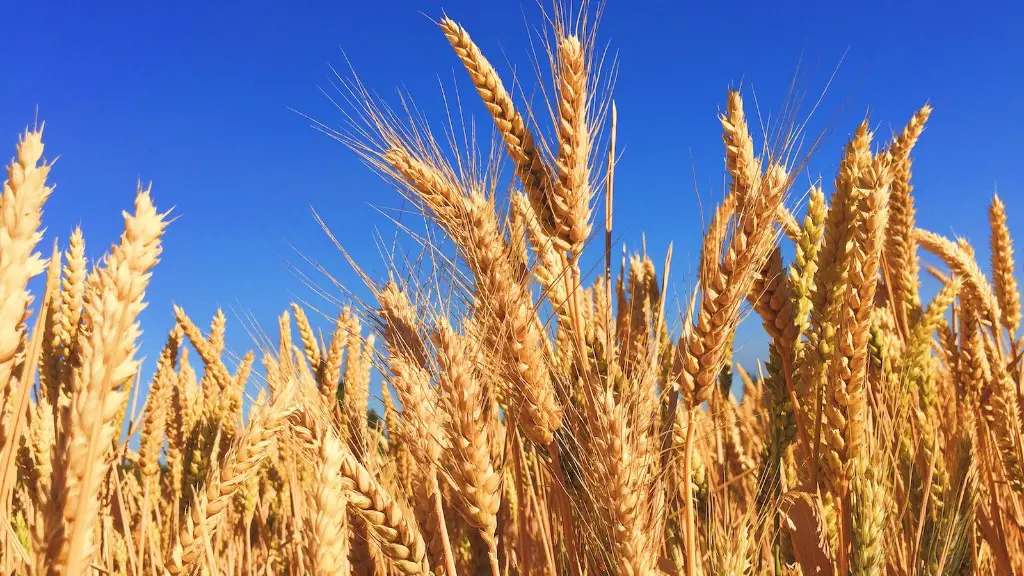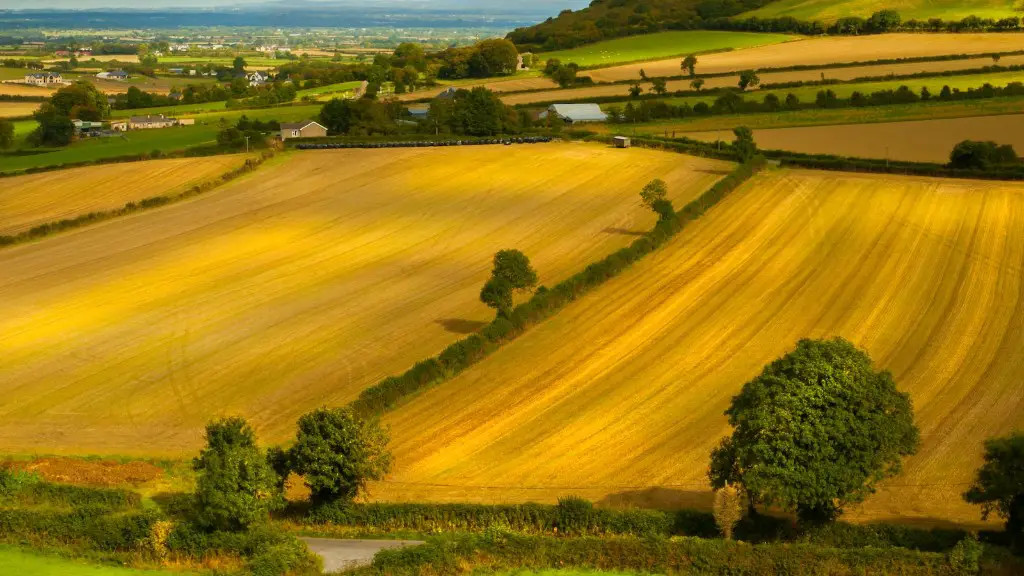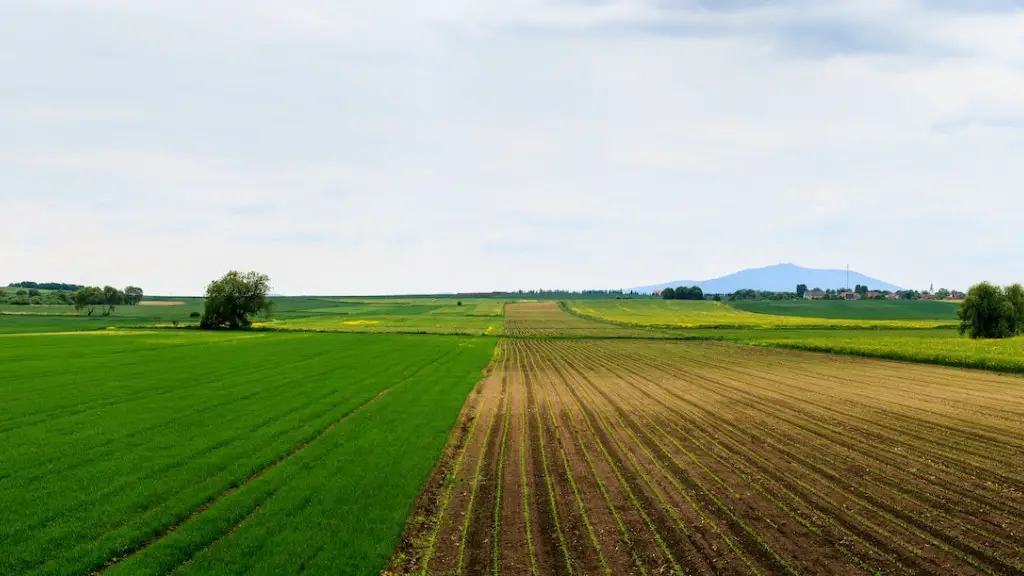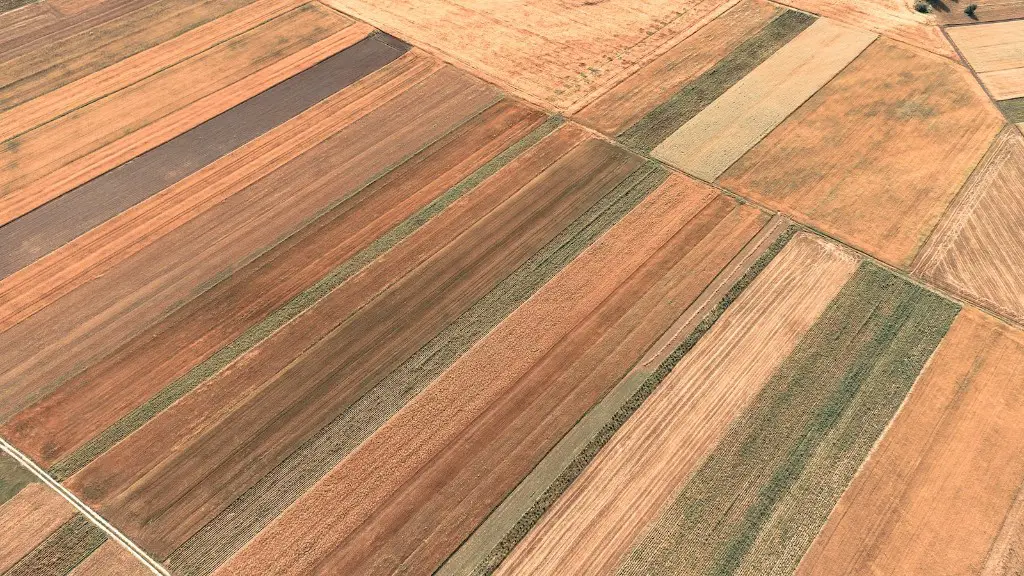In recent years, there has been a growing interest in sustainable agriculture practices. Sustainable agriculture is an approach to food production that seeks to minimize the negative environmental impact of agriculture, while still providing the food and fiber people need.
There are a number of different sustainable agriculture practices that farmers can use, including:
• Crop rotation: Growing different crops in different parts of the field in different years. This helps to break pest and disease cycles, and can also improve soil health.
• Cover crops: Planting cover crops like legumes (clover, alfalfa, etc.) between cash crops. These cover crops add nitrogen to the soil and help to suppress weeds.
• Integrated pest management: Using a variety of techniques to manage pests, including cultural practices, biological control, and selective use of pesticides.
• Conservation tillage: Minimizing soil disturbance to reduce erosion and improve soil health.
Sustainable agriculture practices can help to improve the environmental and economic sustainability of farms.
Sustainable agriculture practices are those that protect and improve the natural resources on which farming depends while promoting economic viability and enhancing quality of life for farmers and their communities.
What is the meaning of sustainable agriculture practices?
Sustainability is a key issue for farmers today – and will become even more important in the face of climate change. Using science-based practices to minimize environmental damage and maximize productivity and profit is essential to sustainable farming. Building resilience into the system – through diversification, for example – will help farmers weather the impacts of climate change.
Sustainable agriculture is a type of agriculture that is practiced in order to protect the environment and conserve natural resources. Sustainable agriculture methods and farming practices include permaculture, biodynamic farming, hydroponics and aquaponics, urban agriculture, agroforestry and food forests, polycultures and crop rotation, heirloom and older varieties, and natural animal raising.
What is the most sustainable agricultural practice
1. Permaculture: This sustainable farming practice involves working with nature to create a sustainable and self-sufficient ecosystem. Permaculture principles can be applied to any environment, including urban and suburban areas.
2. Aquaponics & Hydroponics: These sustainable farming practices use water instead of soil to grow plants. Aquaponics combines fish farming with hydroponics, and can be used to create a closed-loop system where waste from the fish is used to fertilize the plants.
3. Using Renewable Energy Resources: Sustainably-minded farmers are increasingly using renewable energy resources, such as solar and wind power, to power their farms. This reduces their reliance on fossil fuels and helps to protect the environment.
4. Crop Rotation & Polycultures: Crop rotation is a sustainable farming practice that involves growing different types of crops in different areas of the farm. This helps to replenish the soil and prevents the build-up of pests and diseases. Polycultures involve growing multiple crops in the same area, which can help to increase yield and reduce the impact of pests and diseases.
5. Trees Can Increase Crop Yields: Trees can provide numerous benefits to a farm, including shade
Sustainable agriculture is a movement that is garnering increasing support and acceptance within our food production systems. Sustainable agriculture integrates three main goals – environmental health, economic profitability, and social equity.
Environmental health is achieved through practices that minimize soil erosion, conserve water, and reduce pollution. Economic profitability is achieved through efficient production practices that maximize yield and minimize inputs. Social equity is achieved through practices that promote fair labor standards and provide economic opportunities for all members of the community.
The sustainable agriculture movement is gaining momentum as more and more people become aware of the importance of these three goals. We need to continue to support this movement in order to create a more sustainable future for our food production systems.
What are the five main components of sustainable agriculture?
Sustainable agriculture is an important part of protecting our environment and ensuring the viability of our food supply. The components of sustainable agriculture include environmental resource protection, product quality, profitability of individual farms, and policy questions related to the competitiveness of medium sized, family farms. By working to improve each of these areas, we can create a more sustainable food system that will be better for our environment, our economy, and our communities.
The term “sustainability” is most often used to refer to environmental sustainability, which is the preservation of the natural environment. However, the term actually encompasses four distinct areas: human, social, economic, and environmental. This is known as the “four pillars of sustainability.”
Human sustainability refers to the preservation of the human race. This includes ensuring that people have access to clean water, food, shelter, and healthcare. Social sustainability refers to the preservation of human relationships and social structures. This includes things like social justice, equity, and inclusion. Economic sustainability refers to the preservation of the economy. This includes things like financial stability, job creation, and economic growth. Environmental sustainability refers to the preservation of the natural environment. This includes things like air and water quality, biodiversity, and climate change.
The four pillars of sustainability are interdependent. That means that we cannot achieve one without the others. For example, we cannot have economic growth without environmental protection. Sustainability is a complex issue, but it is essential for the future of our planet and our species.
What are 10 sustainable practices?
There are many things we can do to be more sustainable at home. Here are 12 practices you can adopt to make a difference:
1. Avoid disposable items where possible. Use reusable alternatives instead.
2. Reduce your food waste. Plan your meals, only buy what you need, and compost your scraps.
3. Make your own cleaning products. There are many recipes online for DIY all-natural cleaning solutions.
4. Grow a sustainable garden. Use organic methods, and consider planting native species that require less water and care.
5. Buy products with less packaging. Avoid excessive packaging, and recycle or reuse what you can.
6. Recycle properly. Do your research to learn what can and can’t be recycled in your area.
7. Take meat off the menu. Reduce your consumption of animal products, or go meat-free altogether.
8. Buy less, buy better. When you do need to make a purchase, choose quality over quantity.
9. Educate yourself and others. Learn about sustainability and green living, and share your knowledge with others.
10. Advocate for change. Support businesses and organizations that are working to make a difference.
11
Plastics are one of the world’s most significant pollution problems. They clog our oceans and waterways, strangle marine life, and are a major source of ocean litter.
Every year, millions of tons of plastic waste end up in our oceans. Much of this plastic pollution is the result of single-use plastics, like shopping bags, straws, and coffee stirrers.
We can all help reduce ocean plastic pollution by avoiding the use of plastic bags. Bring your own reusable shopping bags when you go to the store, and try to avoid using other single-use plastics whenever possible.
We can also help protect the environment by planting trees. Trees absorb carbon dioxide from the atmosphere and help combat climate change. They also provide homes for wildlife and help to protect our soil and water resources.
We can all help make our world more sustainable by recycling items like paper, plastic, glass, and aluminum. Recycling conserves resources and helps to reduce pollution.
We can also make our cities and communities more sustainable by biking, walking, or using public transportation instead of driving. This helps to reduce air pollution and traffic congestion.
What are the 7 types of agricultural practices
There are four main types of agricultural practices: pastoral, arable, mixed, and taungya farming. Pastoral farming is the raising of livestock on grasslands. Arable farming is the cultivation of crops on land that is plowed and harvested annually. Mixed farming is the raising of both crops and livestock on the same piece of land. Taungya farming is the growing of trees and shrubs on upland areas that are unsuitable for other crops.
Sustainable food and agriculture (SFA) is a holistic approach to food production and consumption that takes into account the environmental, social and economic dimensions of sustainability. SFA contributes to all four pillars of food security – availability, access, utilization and stability – and is therefore an important part of the solution to the challenges of food insecurity and climate change.
What are the 5 sustainable practices activities?
We all know that going green is important for the environment. But sometimes it can be hard to change your habits and live a more sustainable lifestyle. Here are five sustainable practices that can help make your lifestyle greener:
1. Reuse paper and plastic bags for shopping.
2. Opt for paperless documents.
3. Avoid disposable kitchen items.
4. Use eco-friendly bathroom and household cleaning products.
5. Recycle old sneakers.
By making even small changes like these, you can help make a big difference for the environment. So start today and see how easy it can be to go green!
Sustainable agriculture is a great way to help preserve the earth’s natural resources. In addition to preserving the earth’s natural resources, sustainable agriculture benefits the environment through helping maintain soil quality, reducing erosion, and preserving water.
What is the most effective sustainability practice
There are many types of renewable energy, such as solar, wind, hydro, and geothermal. By using renewable energy, your business can contribute to a healthier environment and a more sustainable future. Not to mention, it can also save you money in the long run!
The three pillars of sustainability are economic viability, environmental protection and social equity. Each pillar is equally important in making sure that our planet and its resources are used in a sustainable way.
Economic viability ensures that we can meet our current needs without compromising the ability of future generations to meet their own needs. This means using resources efficiently and investing in renewable energy sources.
Environmental protection means taking action to conserve natural resources and reduce pollution. This includes reducing our reliance on fossil fuels, protecting delicate ecosystems and recycling.
Social equity means making sure that everyone has a fair chance to enjoy a good quality of life, now and in the future. This includes reducing poverty and inequality, providing access to education and healthcare, and promoting human rights.
What are the five 5 importance of sustainable development?
Sustainable development is extremely important for the continued welfare of all countries. All countries should aim to meet their basic needs of employment, food, energy, water, and sanitation. Additionally, everybody is rightful to a healthy, safe, and clean environment. While this may seem like a daunting task, it can be easily achieved by reducing pollution, poverty, and unemployment.
Sustainable development is important because it ensures that all people have access to the resources they need to live a happy and healthy life. When all countries are able to provide these basic needs for their citizens, it creates a more stable and prosperous world. Additionally, a cleaner environment is not only better for our health, but also for the planet as a whole. Reducing pollution, poverty, and unemployment are all key components of sustainable development, and it is important that we continue to work towards these goals.
The six principles of sustainability – Carbon, Environment, Community, Wellbeing, Connectivity and Green economy – are guided from concept to completion by the RIBA 2030 Climate Challenge, the LETI Climate Emergency Design Guide, and the UN Sustainable Development Goals.
The RIBA 2030 Climate Challenge is a framework that sets out a practical approach to achieving net zero carbon buildings. It is based on the latest scientific evidence and has been developed by leading international experts.
The LETI Climate Emergency Design Guide is a practical tool that helps architects and engineers design buildings that are resilient to the impacts of climate change.
The UN Sustainable Development Goals are a blueprint for a better and more sustainable future for all. They address the global challenges we face, including climate change, poverty, inequality, and justice.
What is a simple definition of sustainability
Sustainability is important because it ensures that future generations will be able to meet their own needs. Natural resources are important, but we also need social and economic resources. Sustainability is not just environmentalism – it encompasses a variety of issues. We need to be smart about how we use resources and plan for the future.
Sustainability is important for the health of our planet, and it’s never too early to start teaching kids about how to live sustainably. Here are six fun activities that will help kids learn about sustainability and how they can make a difference:
1. Make recycling a game: See who can collect the most recyclable materials in a week, or make a competition out of sorting different types of recyclables.
2. Compost: Teach kids about the benefits of composting and let them help with the process.
3. Use recycled materials for art projects: Get creative with recycled items and see what kinds of art you can make.
4. Make your own cleaning products at home: Show kids how easy it is to make your own eco-friendly cleaning products.
5. Decorate your own tote bags: Reuse old bags or fabric scraps to make colorful and unique tote bags.
6. Challenge your family to walk instead of drive: See how much Walking or biking instead of driving is a great way to reduce your carbon footprint.
Warp Up
There is no one-size-fits-all answer to this question, as the definition of sustainable agriculture practices can vary depending on the context and location. However, in general, sustainable agriculture practices are those that strive to create a more sustainable and environmentally friendly agricultural system. This can include practices such as using less synthetic inputs, promoting soil health, and promoting biodiversity.
Sustainable agriculture practices are those that protect and regenerate the natural resources upon which agriculture depends—soil, water, and biodiversity. They are also economically viable, providing farmers with a decent living while producing safe, healthy food for consumers. When properly implemented, sustainable agriculture can play a key role in mitigating and adapting to climate change.





